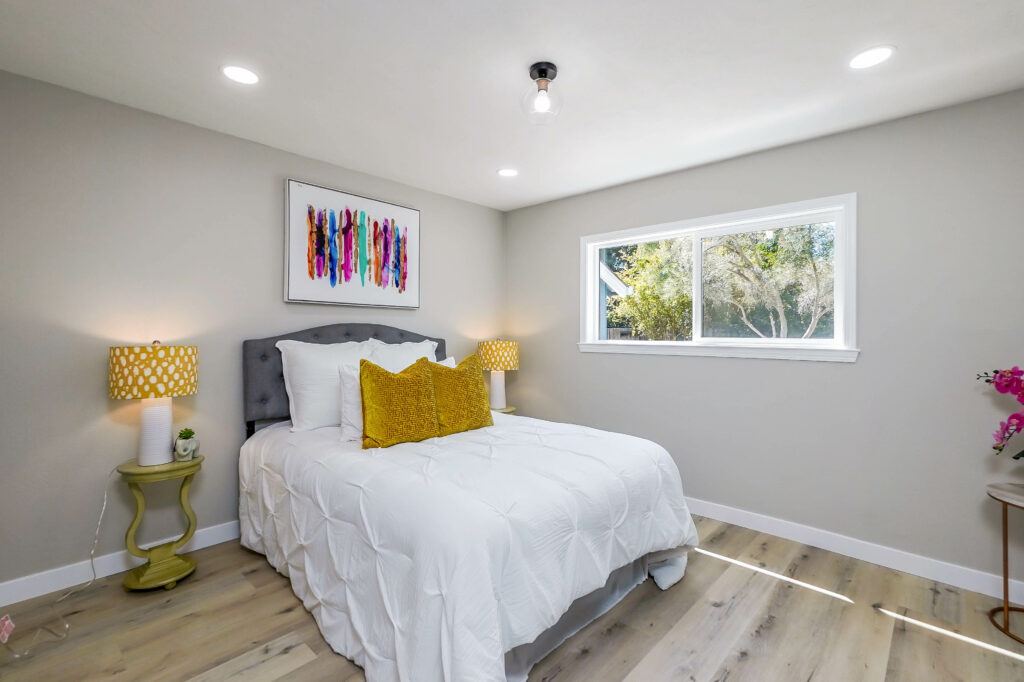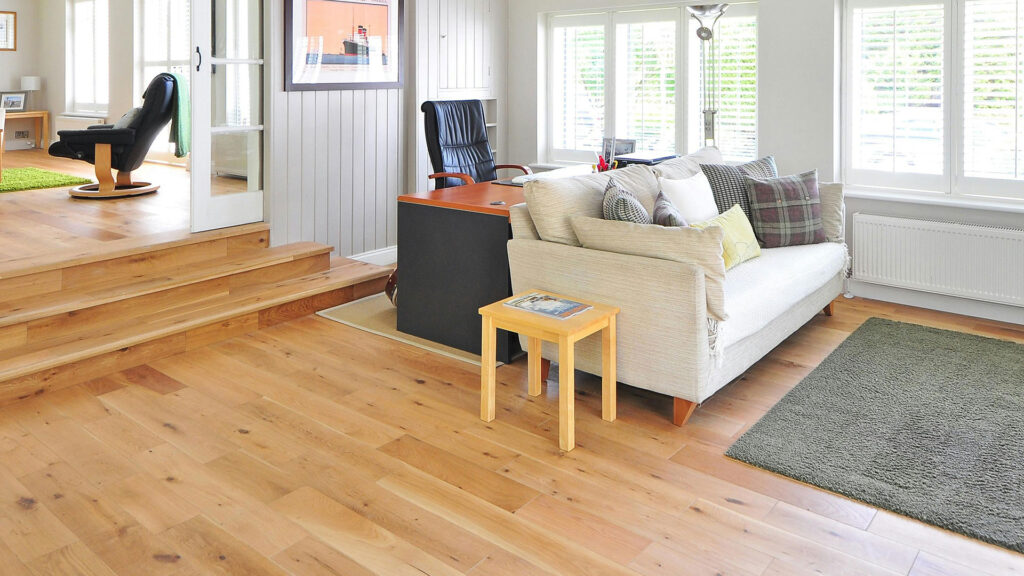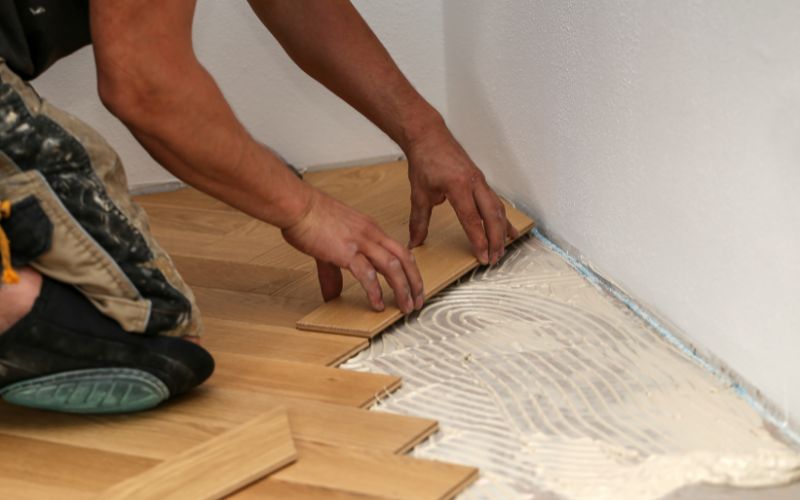When you’re thinking about new floors, it’s easy to get caught up in colors and wood types. But here’s the thing: the secret to beautiful, long-lasting floors isn’t the plank you choose—it’s the Wood Floor Installation Bay Area that makes it all come together.
We’ve all seen it happen. A neighbor spends good money on gorgeous wood, but within a year the boards start squeaking, gaps open up, or the shine fades.
The problem usually isn’t the wood—it’s the installation. Done wrong, even the best flooring won’t hold up. Done right, it can look incredible and stay that way for decades.
This is why professional installation is important. The installer doesn’t simply drop boards on a subfloor. They check the moisture, smooth any irregularities, select the best method to use in your house, and cover it all to make the finish appear perfect.
And in the Bay Area, where we have our combination of humidity, coastal air and changing foundations, such care is all that matters.
This guide will take you through the process of installing wood floors step by step, why paying a licensed professional is worth every dollar and how you may actually be better off with Hardwood Flooring Bay Area.
Key Takeaways
- The right Wood Floor Installation Bay Area makes your floors last for decades.
- Prep work—like leveling and moisture control—can’t be skipped.
- Hiring professionals prevents squeaks, gaps, and warping.
- Engineered Hardwood Flooring Bay Area is great for basements, kitchens, and moisture-prone spots.
- CRBA brings licensed, insured expertise to every hardwood flooring project in the Bay Area.

Why Wood Floor Installation Bay Area Matters So Much
Hardwood Flooring Bay Area isn’t cheap—it’s an investment. But a lot of that investment can go to waste if the installation isn’t done carefully. Here are a few things that often go wrong when it’s rushed or done by someone inexperienced:
- Gaps between boards – usually caused by skipping acclimation.
- Creaks and squeaks – a sure sign the subfloor wasn’t leveled or nailed properly.
- Buckling or warping – happens when moisture isn’t accounted for.
- Uneven look – the result of rushed sanding or sealing.
And in the Bay Area, with its damp winters and changing humidity, these problems can show up fast if the prep isn’t handled correctly.
The Wood Floor Installation Bay Area Process
When you bring in professionals like CRBA, here’s what the process usually looks like:
Step 1: Consultation
This is where the crew gets to know your goals. Are you going for classic solid hardwood, or are you leaning toward engineered for added stability? Do you have kids or pets? High traffic? These details matter.
Step 2: Subfloor Prep
Old flooring comes out. The subfloor gets checked for moisture or damage. Uneven areas get leveled, and barriers are put in place if needed. Without this step, everything else is at risk.
Step 3: Acclimation
The wood gets time to adjust to your home’s humidity—usually three to five days. Skip this step, and you’ll almost certainly end up with gaps later.
Step 4: Installation
Depending on your flooring choice and subfloor, installers might use:
- Nail-down – best for solid hardwood over wood subfloors.
- Glue-down – often used for engineered wood or concrete bases.
- Floating – click-and-lock systems, usually for engineered wood.
Step 5: Finishing
Sanding, staining, sealing—this is where the floor really comes to life.
Step 6: Final Walkthrough
A good installer will walk through the space with you, checking every detail before calling it complete.
Pro tip: Always ask about moisture protection. In Bay Area homes, it’s non-negotiable.
Engineered Hardwood vs. Solid Hardwood.
Solid Hardwood Flooring
- Advantages: Traditional appearance, refinishing capable of reusing time and again, durable (50 or more years).
- Disadvantages: More prone to wetness, must have stable under floors.
Engineered Hardwood Flooring Bay Area
- Advantages: Waterproof, able to withstand concrete and radiant heat.
- Disadvantages: The refinishing is limited as compared to solid hardwood.
Engineered Hardwood Flooring Bay Area is the wiser option in basements or in high-moisture zones.
DIY vs Professional Wood Floor Installation
Some homeowners think about tackling flooring themselves. And sure, for a small room, it might seem doable. But here’s what usually happens when DIY goes wrong:
- Subfloor isn’t leveled → creaks and squeaks.
- Moisture isn’t checked → warping in a few months.
- Wrong spacing → boards buckle or gap.
- No warranty → you’re on the hook if something fails.
Why Professionals Are Worth It
- They bring pro-grade tools you can’t rent at a hardware store.
- They know how Bay Area weather affects wood.
- They work faster and cleaner, with fewer surprises.
- Their work usually comes with a warranty.
Real story: A San Jose homeowner tried a DIY hardwood install. Within months, boards warped because they skipped the moisture barrier. CRBA had to pull everything up, fix the subfloor, and reinstall. Costly lesson—but a common one.

Choosing the Right Contractor
When hiring someone for Wood Floor Installation Bay Area, here’s what you should ask:
- Are you licensed and insured?
- Do you have experience with hardwood flooring specifically?
- Can I see examples of past projects?
- What installation method do you recommend for my home?
- Do you provide a warranty?
Red flags: no license, vague estimates, or suggestions to “skip prep” for faster results.
Why Bay Area Homeowners Choose CRBA
CRBA has been helping Bay Area homeowners since 2015, and we’ve seen it all—DIY disasters, botched installs, and floors ruined by skipped prep.
Here’s why people trust us:
- Licensed and insured (California License #1095283).
- Experienced with Bay Area homes, weather, and foundations.
- Customized installs—no one-size-fits-all approach.
- Partnerships with premium brands for quality materials.
- Over 200 happy homeowners and growing.
When you choose CRBA, you’re choosing a crew that cares about getting it right the first time.
FAQs
Q1. How long does wood floor installation take?
Usually 3–7 days, depending on prep and square footage.
Q2. Should I choose solid or engineered hardwood?
It depends—solid is timeless, engineered is better for moisture-prone spaces.
Q3. Can hardwood go over concrete?
Yes—with engineered hardwood and proper barriers.
Q4. How do I maintain my new hardwood floors?
Sweep regularly, avoid too much water, and refinish every 7–10 years.
Q5. Does CRBA handle finishing as well as installation?
Yes—we install, sand, stain, and seal for a complete service.
Conclusion
When it comes to Wood Floor Installation Bay Area, the details matter. Bad prep or sloppy work leads to squeaks, gaps, and warping. Done right, your floors will look beautiful and last for decades.
Whether you want the classic charm of solid hardwood or the stability of Hardwood Flooring Bay Area, the key is hiring pros who know the Bay Area climate and foundations.
That’s what CRBA delivers—licensed, insured flooring installs built to last.
Ready to upgrade with hardwood floors that are both beautiful and durable? Call CRBA today at (510) 949-4105 or request your Free Consultation. Our team specializes in Wood Floor Installation Bay Area and will give you floors you’ll love for decades.


